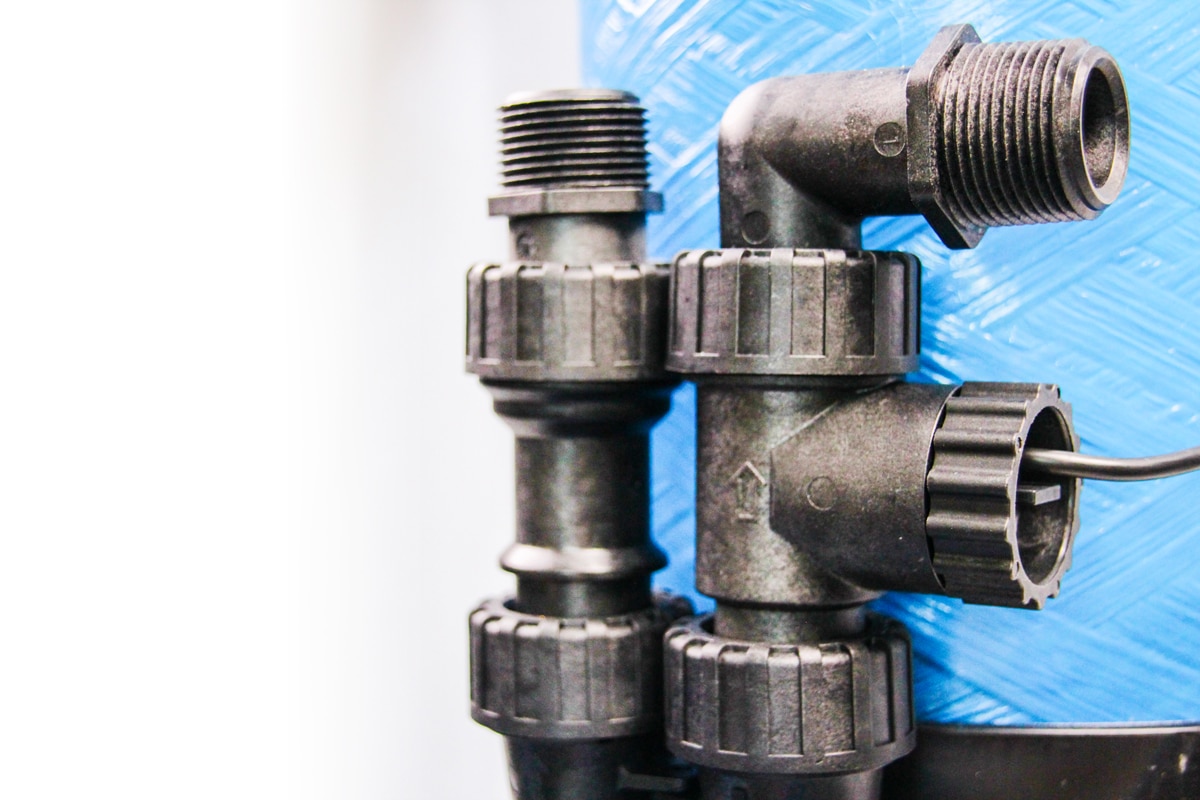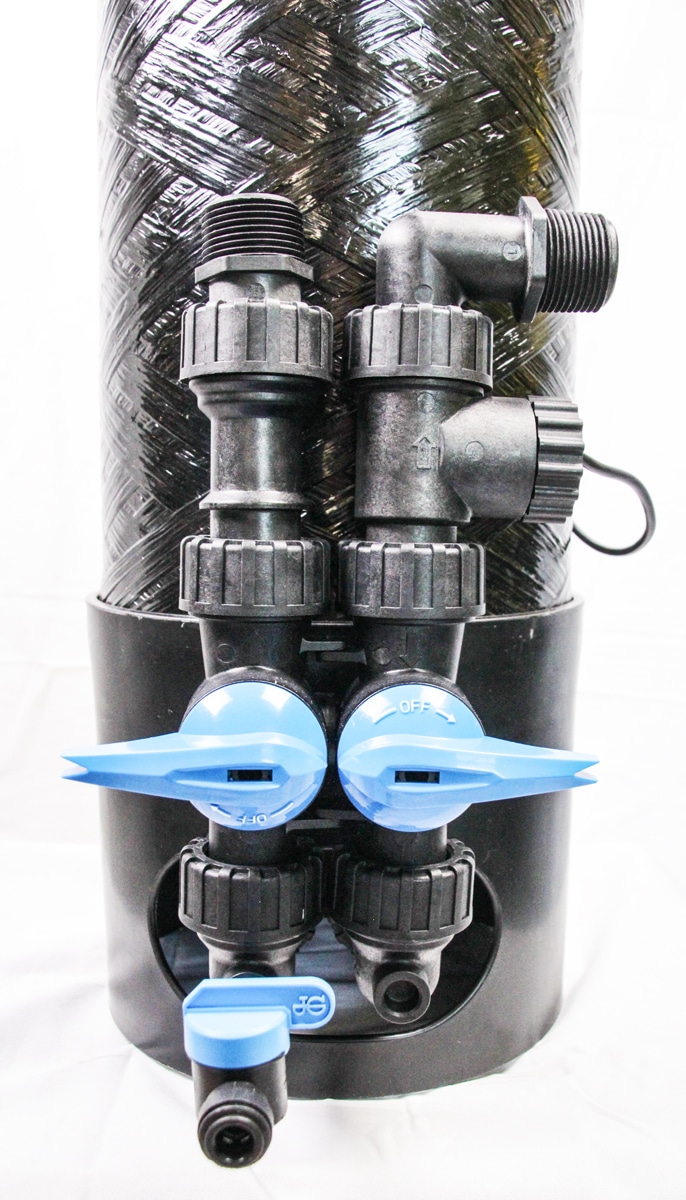
ENPRESS’ new filtration system removes soluble and particulate lead from water. [Photo: ENPRESS LLC]
Your water is probably contaminated. ENPRESS’ PIONEER® can help.
Prior to the 1986 ban of lead in new home construction, more than 70% of U.S. cities used lead-based products in their water systems. Much of that infrastructure remains today and, as a result, a recent national survey of community water systems suggests the number of lead service lines in the country could range from 6 to 10 million and may provide water for as many as 96 million people.
The issue of lead contamination—and the health problems it can cause—has come to national attention thanks to coverage of the water crisis in Flint, Michigan. As local, state, and federal officials scramble for answers and solutions, the issue remains.
This is where ENPRESS comes in. The company’s new PIONEER® filtration system removes both soluble and particulate lead from every drop of water that enters a house. We recently sat down with ENPRESS Vice President Michael P. Mormino to talk about this innovation that’s 100% U.S.-made.
Everyone knows consuming lead is bad, but how bad is it?
The challenge with lead is, it bioaccumulates. It will accumulate in your body and it does not leave. It can adversely affect children more than adults because they’re growing, so their bodies are more susceptible. Lead can cause damage to kidneys, the nervous system, and the brain, affecting IQ, hearing loss, and may cause behavioral issues.
The American Academy of Pediatrics states there are no effective medical treatments for lead poisoning and that prevention of exposure is needed. The only way to find lead poisoning is through a blood test.
How widespread is the issue of lead contamination?
They were using lead pipes for conveying water until 1986, because it was less expensive and more durable than iron. Just think about the areas where most of us live. Those cities have been there for a long time. Nearly every major metropolitan area has recently identified some form of lead in community water supplies—Chicago, Pittsburgh, Los Angeles, significant parts of the Northeast, Midwest, Texas, and Florida, and so on. Milwaukee recently said there’s a part of town where 75,000 homes are connected to lead laterals, and it’s estimated that the total price for changing the laterals would be up to $756 million and take decades to complete. And there’s still no guarantee this would alleviate the occurrence of lead in the service lines and in homes. The EPA’s latest survey estimated the entire sector needs $385 billion in water infrastructure improvements through 2030, and this estimate includes costs to only partially replace lead pipes.

[Photo: Courtesy of ENPRESS LLC]
FROM OUR JAN+FEB 2019 ISSUE

The preferred publication of leading green professionals.
What are municipal water systems doing to take care of this problem?
It’s not where the water is produced, but rather how the water is traveling through miles of pipe. The challenge is, lead can enter drinking water when service lines that contain lead corrode. This most often happens as a result of a change in the chemistry of the water or a physical disturbance such as road construction or water main replacement. If the characteristics of the water change, consumers would not know. Meanwhile, consumers are still going to have lead pipes. I’m not saying don’t dig up the pipes. But it could take 50 years. We need something that can bridge that gap. Perhaps our technology can work side-by-side with the municipalities to do that.
What makes this system better than a point-of-use solution like pitcher or faucet filters?
There was nothing until PIONEER® came along that could take care of all the water that enters the house. The combination of the filter system and the filter technology has truly made it the first of its kind. I have four children, and they are drinking the bathwater, the shower water, they’re brushing their teeth and drinking the water there, too. The dishwasher, the washing machine, the sink—the water’s always on. We want to filter all that water. Trust me, I have one of these.
How does it remove both lead particles as well as lead that’s dissolved in water?
Our system is designed to attract and ionically bond with the soluble lead. It involves electrostatic attraction—it works like a magnet. Lead has a plus-two charge and our filter has a minus-two charge. As it passes through the filter, the minus-two will grab the plus-two and it will bond to it. It’s not getting back out.
We went through extensive third-party testing with IAPMO R&T to the NSF/ANSI 53 Standard for lead and cyst filtration. For lead particles, you must be able to filter down to 0.5 microns, which is really small. PIONEER® is certified for the treatment of 100,000 gallons of water, and for cysts like Giardia and Cryptosporidium, which can cause diarrhea, nausea, and stomach cramps. PIONEER® also filters chlorine, chloramines, and improves the taste of the water.
Where is the system installed, and how difficult is installation?
Think about where your water meter is. Usually this system would be installed after the water meter, in a home, business, restaurant, school, and so forth, so you’d be assured all the water is getting filtered. A local plumber could easily install this in less than half an hour.
How often do users need to replace filters?
A PIONEER® filter is designed to last for about a year and filter 100,000 gallons of water. In my house, we use more than 100,000 gallons of water in a single year. But a family of two? It might last longer than a year.
The system has a meter and it counts the gallons, so there is no guessing if the filter is working or how much life is left before it needs to be changed. There’s a green light that tells the homeowner everything’s good. When it turns yellow that means there’s 10% of life left in the filter. When the red light comes on, you’ve reached the available limit.

